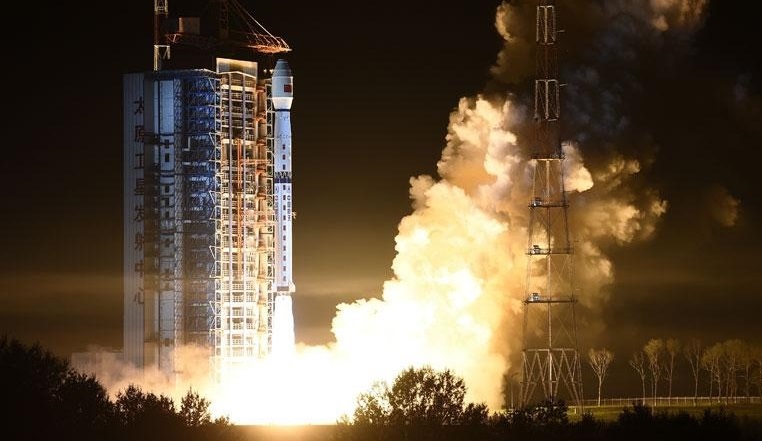China’s Long March 4C Launches Fengyun-3D Weather Satellite & HEAD-1 Ship-Tracking MicroSat
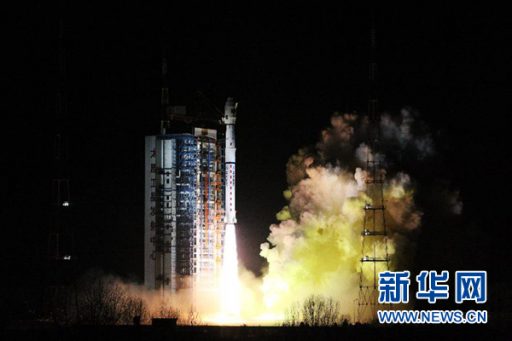
China launched a Long March 4C rocket from the Taiyuan Satellite Launch Center at 18:35 UTC on Tuesday, carrying into orbit the Fengyun-3D weather satellite, joining China’s polar-orbiting constellation of meteorological satellites tasked with monitoring clouds, tracking adverse weather systems, delivering atmospheric profiles and collecting vital climate parameters for long-term studies.
November 2017 is seeing a congregation of weather satellite launches from three nations with Fengyun-3D leading the way after the first satellite in the U.S. Joint Polar Satellite System was forced to abandon a launch attempt Tuesday morning due to problems with its Delta II rocket and a range violation at the California launch base. The third meteorological satellite headed into orbit this month is Russia’s Meteor-M 2-1, targeting liftoff atop a Soyuz on the 28th.
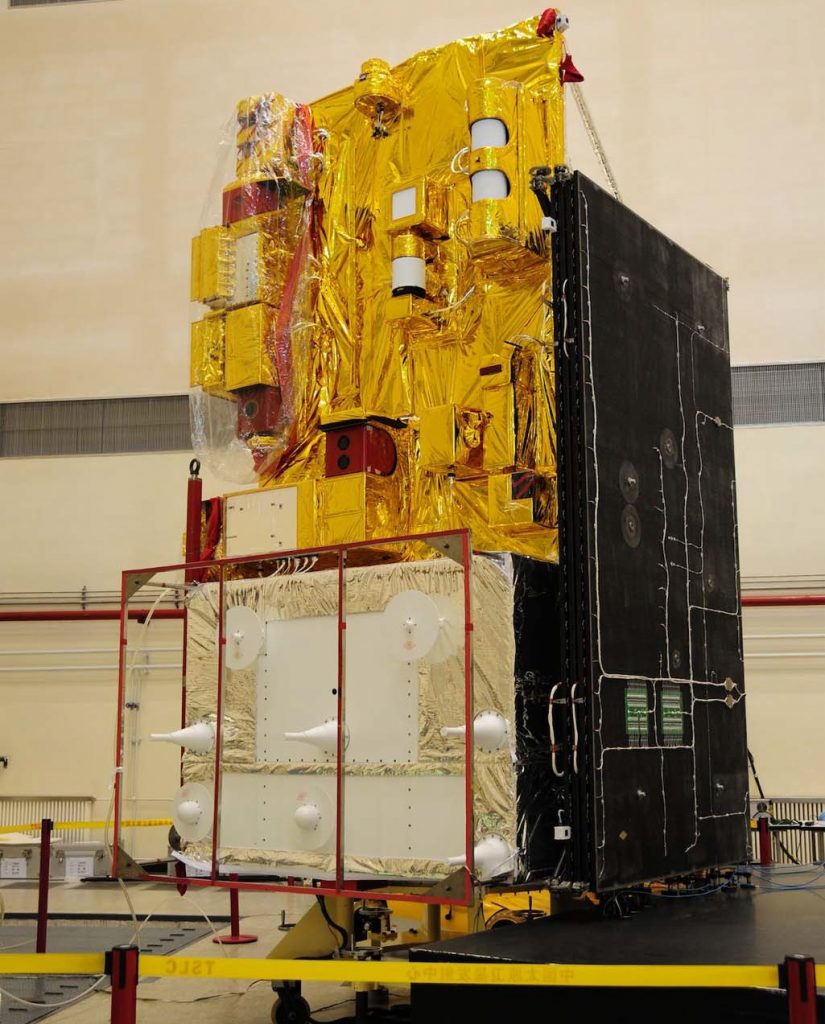
All three weather satellites launching this month operate in polar orbits and work in tight cooperation with meteorological satellites in Geostationary Orbit with the high-altitude satellite providing rapid revisit coverage of a broad area and the polar satellites delivering in-depth atmospheric properties, building an integrated system that feeds into weather now- and forecasting.
In case of China, all weather satellites fly under the ‘Fengyun’ designation, a combination of the Chinese words for clouds and wind; even-numbered Fengyun satellites operate from Geostationary Orbit while odd-numbered spacecraft circle the Earth in Sun Synchronous Orbits 836 Kilometers in altitude.
Operated by the China Meteorological Administration (CMA) and the National Satellite Meteorological Center (NSMC), the Fengyun program was inaugurated in 1988 with the launch of the first-generation polar-orbiting satellite followed by the second FY-1 satellite in 1990. The Geostationary satellite series – held up by technical difficulties and a processing accident – debuted in 1997 with the Fengyun-2A satellite. Since then, the polar-orbiting constellation segment moved on to its second generation with an inaugural launch in 2008 after ten years of development while the first of the second-generation GEO spacecraft launched just last year.
Per operational requirements, Fengyun-3 aims to have at least two satellites in operational condition – one in a morning orbit with an equator crossing at 10:00 hours and the other in an afternoon orbit with a 14:00 crossing time. Fengyun-3A launched as a pathfinder mission and was followed by FY-3B in 2010 and FY-3C in 2013 with each expected to operate at least three to four years, but typically surpassing the design lives of most of the instruments.
>>Detailed Overview of Fengyun-3D & its Instrument Package
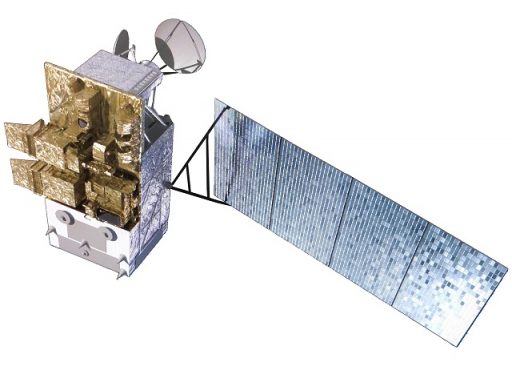
A total of 12 instruments are part of the Fengyun-3 satellite series, though not every satellite is flying the same equipment.
Common across all FY-3 satellites is the MERSI Medium-Resolution Spectral Imager, a trio of microwave sensing instruments to extract atmospheric humidity and temperature profiles, a hyperspectral infrared spectrometer to refine atmospheric profiles and collect data on specific constituents and aerosols, an occultation instrument as a new atmospheric profiler and a Space Environment Suite to measure charged particles, X-ray influx and auroral activity. In addition to the common instruments, FY-3D hosts a greenhouse gas spectrometer, bringing the total number of spacecraft instruments to eight.
Weighing in at 2,400 to 2,500 Kilograms, Fengyun-3D measures 4.4 by 10 by 3.8 meters in size once deploying its single solar array. With its instrument deck pointed to Earth, the satellite will scan the entire planet with most of its instruments once per day in daylight conditions plus an additional night pass over all locations to deliver twice-daily coverage for some of the instruments. Data from satellites in polar orbit will be used in intermediate numerical forecast models three to seven days in the future and additional parameters captured by the satellites are a vital part of various scientific applications including climate change research.
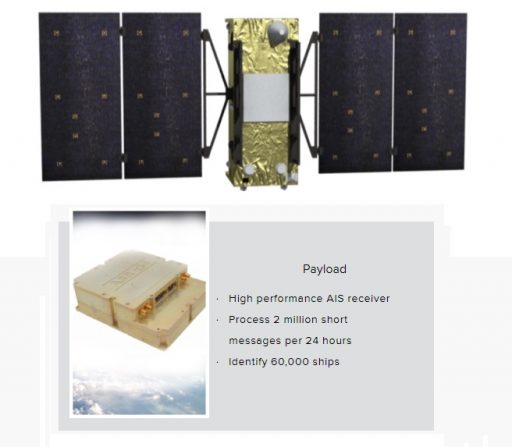
Riding shotgun on Tuesday’s Long March 4C launch was the commercial HEAD-1 satellite, the first member of the Skywalker Constellation of HEAD Aerospace. The 45-Kilogram, three-axis stabilized microsatellite features two deployable solar arrays, a precision pointing system and high-speed data transmission to support a high-performance receiver for the Automatic Identification System (AIS) to track ship traffic across the globe.
HEAD-1 makes use of the highly-integrated ‘Smart’ satellite platform to enable the cost-effective deployment of a large satellite constellation. The advanced AIS payload can decode and process 2 million short messages per day and identify 60,000 ships with a planned mission duration of at least two to three years. HEAD-1’s payload has been optimized for medium- and high-density shipping lanes to provide optimal data in an area where other space-based AIS terminals ran into problems due to signal overlap. Data from HEAD-1 will be offered on the commercial market to maritime operators, shipping companies, fisheries, the insurance industry, governments and port authorities.
HEAD Aerospace is headquartered in Beijing and has subsidiaries in Italy, France, Hong Kong and the Netherlands. The venture sets out to deploy a constellation of 30 satellites built on different buses and enabling multi-sensor capabilities including global AIS coverage and remote sensing products.
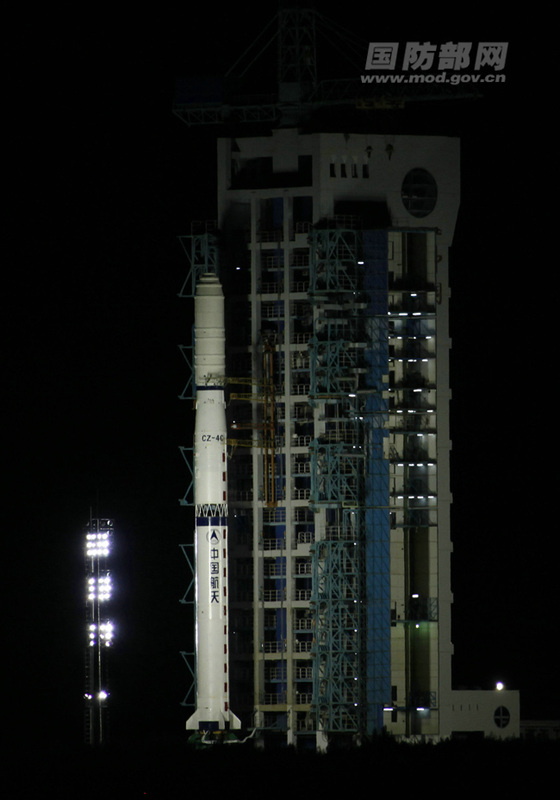
The Long march 4C Launch Vehicle is part of China’s flight proven Long March Rocket family. It is derived from the CZ-4B Launcher, but features a re-startable upper stage and can accommodate a larger Payload Fairing. It is operated from the Jiuquan and Taiyuan Satellite Launch Centers.
CZ-4C has a liftoff mass of 250,000 Kilograms and is 45.8 meters in length with a diameter of 3.35 meters. It features several improvements over the CZ-4B such as new telemetry, tracking, control, and self-destruction systems that are smaller in size.
The first stage of the vehicle is powered by a YF-21B Rocket Engine which consists of a cluster of four YF-20B Engines each providing 814 Kilonewtons of Vacuum Thrust
At liftoff, the YF-21B provides a thrust of 2,962 Kilonewtons generating a total Thrust-to-Weight ratio of 1.21. The Engine Assembly has a weight of 2,850 Kilograms, is 3.3 meters in length and 3.5 meters in diameter. The engine nozzles are gimbaled for vehicle control. All three Stages of the vehicle use Nitrogen Tetroxide as oxidizer and Unsymmetrical Dimethylhydrazine as fuel. The first stage has a liftoff mass of 193,300 Kilograms including 183,300 Kilograms of propellants. It is 24.7 meters in length.
The second stage of the vehicle is powered by a YF-22B Main Engine providing 738 Kilonewtons of thrust and a four-chamber vernier yet designated YF-23F providing 46 Kilonewtons of thrust. The main engines is fixed while the four vernier nozzles can be gimbaled for attitude control during powered flight. The stage is 10.4 meters long and holds 35,370 Kilograms of storable propellants. Both, the first and second stage, are based on components that are flown on other CZ Rockets. The third stage however, is a specially designed rocket stage for the Long March 4C and its purposes.
The stage is 4.9 meters long and has a reduced diameter of 2.9 meters. Liftoff mass is 14,560 Kilograms including 12,800 Kilograms of propellants. It uses a 98-Kilonewton YF-40 Rocket Engine. YF-40 has a dry weight of approximately 166 Kilograms and a diameter of 0.65 meters. It provides re-ignition capability to the vehicle in order to target a variety of orbits and provide precise injection capabilities.
Long March 4C is capable of delivering payloads of up to 4,200 Kilograms to Low Earth Orbit. Sun Synchronous Orbit capability is 2,800 Kilograms and Payloads of up to 1,500 Kilograms can be delivered to Geostationary Transfer Orbit by the Long March 4C.

